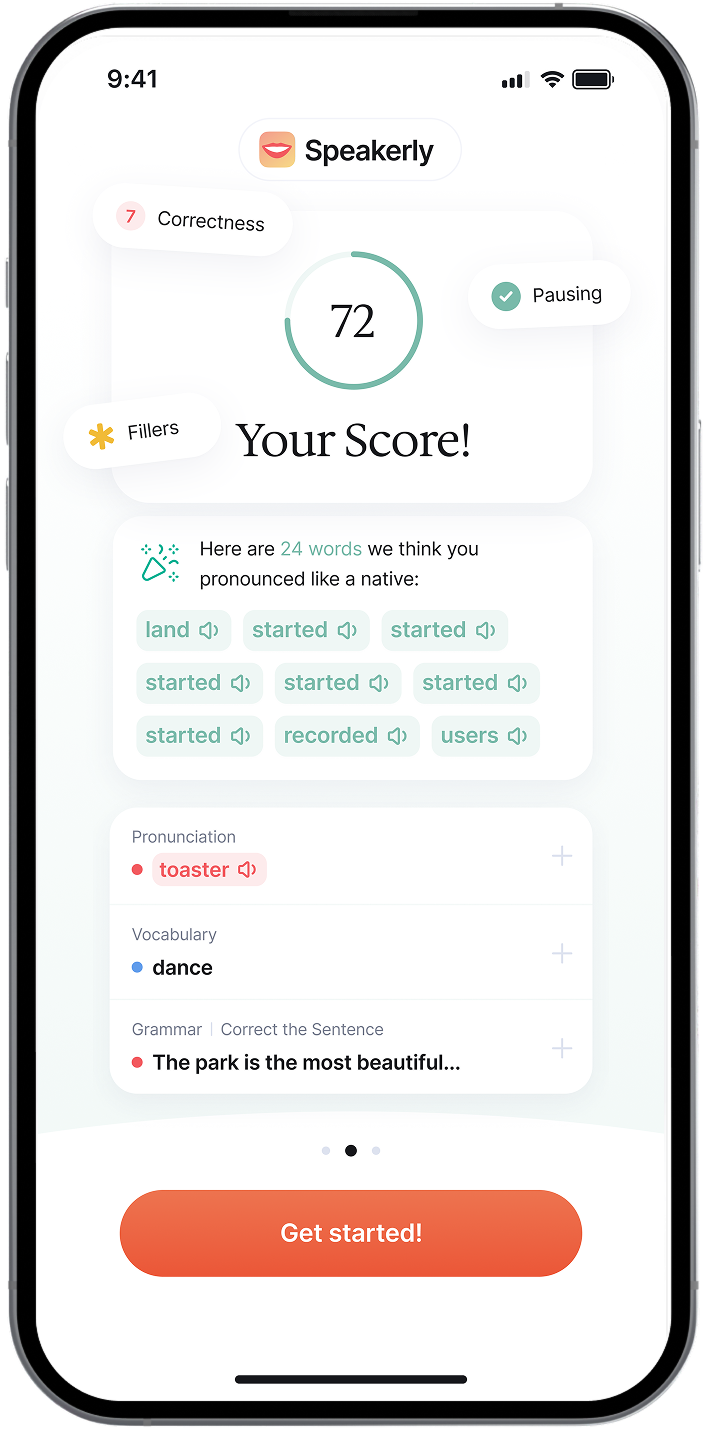Feeling nervous when speaking English? You are not alone. Millions of learners understand grammar and vocabulary perfectly, yet freeze when it is time to talk. The good news is that you do not need a partner or a classroom to become confident in English. With modern tools and smart techniques, you can practice anywhere, anytime, and start sounding natural within weeks.
In this guide, we will show you how to improve your English speaking confidence step by step using AI, real-life scenarios, and proven psychology-based methods.
Step 1: Understand What “Speaking Confidence” Really Means
Speaking confidence is not about being perfect. It is about feeling comfortable making mistakes. Confident speakers:
- Speak without overthinking grammar in real time
- Recover quickly when they make errors
- Focus on communication, not perfection
So instead of chasing flawless speech, aim to build comfort. Every small speaking attempt strengthens your fluency muscle.
Step 2: Practice Out Loud, Even Alone
You cannot improve speaking by reading silently. Try these solo techniques:
- Shadowing: Listen to short English clips and repeat them immediately, mimicking rhythm and tone.
- Self-talk: Narrate what you are doing (“Now I am making coffee, it smells great”).
- Mirror speaking: Talk to yourself in front of a mirror to build confidence and control expressions.
These simple habits train your mouth, ears, and brain to work together, just like in real conversation.
Step 3: Use AI Tools Like Speakerly AI for Real-Time Practice
If you do not have a native speaker to talk to, AI can fill that gap. With Speakerly AI, you can:
- Talk freely with an AI speaking partner anytime
- Get instant feedback on pronunciation, grammar, and fluency
- Practice personalized speaking exercises based on your mistakes
It is like having a private English coach in your pocket, available 24/7 and never judging you.
💡 Tip: Focus on short, daily sessions. Ten minutes of real-time practice each day builds more confidence than hours of silent study.
Step 4: Train Your Pronunciation and Accent
A big reason people feel shy speaking English is fear of being misunderstood. By improving pronunciation, you automatically sound clearer and feel more confident.
Here is how:
- Practice tricky English sounds (like “th,” “r,” or “v”) using audio drills.
- Record your voice and compare it with native examples.
- Use AI pronunciation feedback tools (like Speakerly AI) to spot and fix mispronounced words instantly.
Even small improvements in clarity can make you feel proud to speak up.
Step 5: Build Automatic Fluency with Repetition
Confidence grows with repetition under low pressure. Instead of memorizing textbook dialogues, try repeating mini-scenarios relevant to your life:
- Ordering coffee
- Introducing yourself at work
- Talking about your hobbies
Speakerly’s roleplay mode helps you simulate real conversations like these so that by the time you face them in real life, they feel familiar.
Step 6: Record and Review Yourself
Most learners dislike hearing their own voice, but it is one of the fastest ways to improve. When you record your English practice, you can:
- Notice progress over time
- Identify repeated mistakes
- Hear how your accent changes
You will be surprised how much more confident you feel after realizing you sound better than you expected.
Step 7: Celebrate Small Wins
Confidence does not come from one big leap. It comes from small victories:
- You spoke up during a meeting
- You understood a podcast without subtitles
- You practiced every day for a week
Reward yourself for consistency, not perfection. Remember, every sentence you say in English is proof of progress.
Summary: You Do Not Need a Partner to Speak Confidently
To build real English speaking confidence, you need daily, consistent speaking time — not a human partner.
Here’s a simple 7-day plan to help you practice on your own and start feeling fluent faster.
🗓 Day 1: Break the Silence
- Talk out loud for 5 minutes about your day or describe what you see around you.
- Open Speakerly AI and record a short introduction about yourself.
- Review feedback on pronunciation and grammar.
- Goal: Overcome hesitation and start hearing your own voice in English.
🗓 Day 2: Train Pronunciation
- Choose 5–10 tricky words or sounds (“th,” “r,” “v,” “l”) and repeat them with Speakerly’s feedback.
- Shadow a short English video, focusing on rhythm and intonation.
- Goal: Improve clarity and get comfortable with mouth movements.
🗓 Day 3: Speak with Structure
- Pick one topic (your favorite movie, your job, your weekend) and speak for 2–3 minutes nonstop.
- Review the transcript or AI notes to see where you paused or hesitated.
- Repeat the same speech with smoother delivery.
- Goal: Build flow and learn to speak without translating.
🗓 Day 4: Real-Life Roleplays
- Use Speakerly AI to roleplay everyday scenarios: ordering food, greeting someone, asking for directions.
- Focus on natural tone and confidence rather than correctness.
- Goal: Practice realistic conversations that you might have in daily life.
🗓 Day 5: Record and Reflect
- Record yourself explaining a simple topic (for example, “how to make coffee” or “my morning routine”).
- Listen back and write down 2–3 things to improve next time.
- Goal: Train your ear and self-awareness for speaking progress.
🗓 Day 6: Fluency Challenge
- Try a 5-minute free talk with Speakerly AI. No script, no preparation.
- Let the AI correct your mistakes in real time and repeat the same session to compare results.
- Goal: Push yourself to think and speak in English without stopping.
🗓 Day 7: Confidence Boost
- Repeat your Day 1 introduction and compare it with your first attempt.
- Notice how much more fluent, natural, and confident you sound.
- Reward yourself — you completed a full week of speaking practice!
- Goal: Feel proud of your progress and ready to continue your daily routine.




